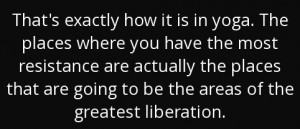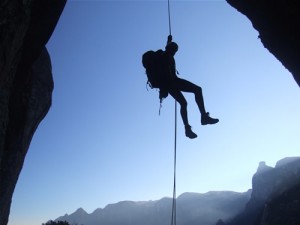 I am a lot like you, except not always. I am forceful with the best of them, except I am not always forceful. I can be limp and resigned, like you, except that I am not always limp and resigned.
I am a lot like you, except not always. I am forceful with the best of them, except I am not always forceful. I can be limp and resigned, like you, except that I am not always limp and resigned.
I have mastered to a large degree the capacity “allowing.”
One of the readers says in a comment: I have been practicing dropping the pen, and yet I find no change in my attitude towards anger that I don’t want.
Dropping is forceful. Surrendering is forceful. Changing is forceful.
Allowing is NOT forceful. Allowing something to be exactly the way it is and exactly the way they aren’t (but should be) is the capacity that without it your misery will only deepen with time.
If you observe yourself, you don’t allow anything, i.e. you resist it. Resistance is forceful.
 I first encountered “allowing” in 1987. I was in a week long program, and I was exhausted. My muscles were shaking from exhaustion. That is when the program point: vertical rappel came. It looked like it needed me to be strong, and I knew that death was imminent. I also knew that not going down the rappel was in conflict with my agreement: participate in every exercise.
I first encountered “allowing” in 1987. I was in a week long program, and I was exhausted. My muscles were shaking from exhaustion. That is when the program point: vertical rappel came. It looked like it needed me to be strong, and I knew that death was imminent. I also knew that not going down the rappel was in conflict with my agreement: participate in every exercise.
I looked what preparation I needed before I died. I needed to tell my mother I loved her. I didn’t stop to be surprised… I went to one of the assistants and I asked her to tell my mother my message, in case I died. She said OK.
 Vertical rappel only looks difficult: it is actually easy. I didn’t die. But I experienced, for the first time, allowing. Allowing is the main element in serenity.
Vertical rappel only looks difficult: it is actually easy. I didn’t die. But I experienced, for the first time, allowing. Allowing is the main element in serenity.
At the same week long program I allowed the idea that people won’t like me.
This was 28 years ago. With this I began my climb up the Tree of Life, The “map” of Consciousness.
Life’s been a series of turning points, and all turning points were a new area where allowing was possible and it was missing.
The next one that stands out was in 1992. The homework in a course was to look at my life and see what it was that I hated about it. Then turn it on its head and create a purpose for my life from it.
 What I hated most about my life was that it was like the life of a phoenix bird: at regular intervals it had spontaneous combustion: it burned and died, and then was restarted.
What I hated most about my life was that it was like the life of a phoenix bird: at regular intervals it had spontaneous combustion: it burned and died, and then was restarted.
It was horrible financially, careerwise, relationshipwise, emotionally, healthwise… It was horrible and I hated it. I wanted a smooth, predictable climb… not a roller coaster.
I turned it on its head and invented a purpose for my life that serves me well to this day:
The purpose of my life is “living on the edge generating distinctions of transformation for humankind.”
Let’s look why it worked and why it worked so well:
1. living on the edge (where you often fall off!) was already how I lived… it wasn’t really up to me… it felt predetermined.
2. so instead of looking at it as something I have to suffer from, I looked how I can alter the context (I hate it, it shouldn’t be) and create a new context that makes it right, that makes it a blessing. So I saw two things: a. keep my eyes open while it’s happening, b. make it something that makes me uniquely qualified to tell people about the edge…”generating distinctions of transformation for humankind.”
My phoenix-like life is still phoenix-like. It’s still like a roller coaster. The difference is that now it feels useful, and there is no resistance and there is no trying to control it.
So, after the first beingness you need to master, you’ll need to master creating and living in an invented context.
How do you do it? How can you override the hardwired urge to stay alive, to control the environment, to force our will on life?
I have found that curiosity, the curiosity of the Observer, makes the biggest difference.
If and when I can get curious of the outcome, of a behavior, of a feeling, or a person, then I can allow.
The only question you should have now is: should I then start with curiosity?
